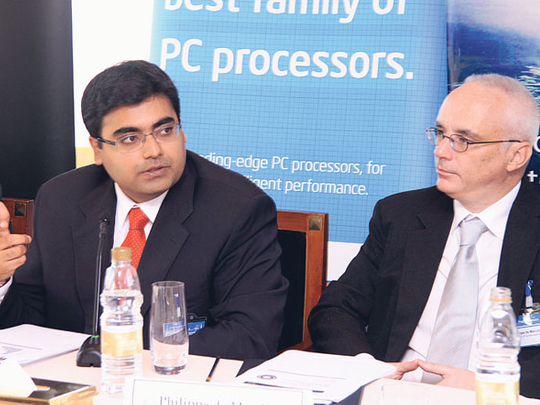
Dubai: Information technology spending in the Middle East and Africa will see growth of 11 per cent this year after 2009's contraction, according to a report by IDC.
IDC, a US research firm for the information and communication technology sectors, yesterday said that in 2009 projected spending in the Middle East and Africa was $44 billion, a five per cent drop from that in 2008.
The Middle East and Africa region will continue to see double-digit growth in IT spending until 2013, compared to just 2.5 per cent in the world's developed markets, IDC added.
IT spending in 2009 was affected by the economic downturn that led to cost-cutting measures across sectors. IT expenditure bore the brunt of this. Additionally, expansion plans of many international corporations were halted as demand slowed in regional markets.
However, growth prospects are back this year as the region is regarded as the forerunner of economic recovery.
Philippe de Marcillac, IDC's executive vice-president for international business, said that sentiment in the world's emerging markets can best be described as "cautiously optimistic" and that enquiries are increasingly becoming focused on what the recovery will look like rather than on how much worse the situation will get.
He also said that the Middle East and Africa is rapidly growing in terms of worldwide influence, revealing that while the region had a six per cent share of global ICT expenditure in 2009, it will be responsible for 17 per cent of the world's net new expenditure over the next two years.
Emerging markets represented 22.2 per cent of the world's IT spending in 2008. Research shows that these markets will gain a larger share by 2012, touching 26 per cent.
When a market represents over 20 per cent of global spend, it get a lot more focus from international companies, said Philippe de Marcillac, IDC's executive vice-president for International Business.
Jyoti Lalchandani, IDC's regional vice-president and managing director, said that IT spending in the Middle East will mostly be in the public sector, while key spending areas will also include health care, education, banking and the financial sector.
Marcillac said that the energy sector will continue to invest, but the automotive and consumer electronic sectors will work to develop lower price points over the next two-three years, thereby spending more in technology.
Meanwhile, the Economist Intelligence Unit (EIU) said in its UAE report that the country's IT spending will hit $4.3 billion in 2010, a slight decrease from 2009's projected spending of $5 billion.
"Spending in the UAE is relatively low compared with eight per cent of GDP in Jordan and six per cent in Tunisia, but, in absolute terms, IT spending in the UAE is the second highest in the Arab world," EIU's latest report said.
Industry representatives said as market demands change, investment in new, more efficient technology, which is also faster and smarter, is needed.
Khaldoun Abul Saud, regional market development manager at Intel, said that companies should look to "refresh" this year.











